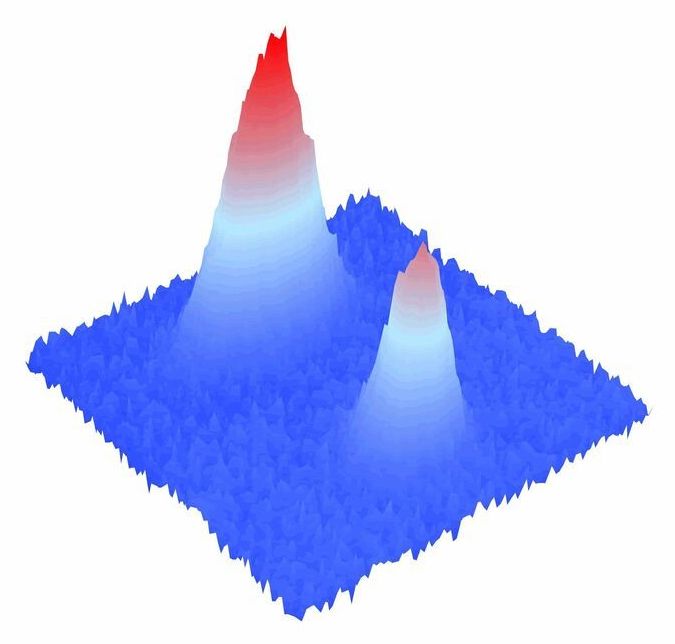Scientists reassemble a frog’s living cells into robotic devices — with no electronics required.




A methodology that utilizes measurements in the variation of flux from cosmic muons (heavy cousins of the electron)—called archaeological muography—detected evidence for a possible second entrance and hidden corridor in the Great Pyramid of Giza (the largest of the Pyramids of Giza). As well, thermal imaging have revealed perplexing thermal anomalies in the Great Pyramid. Several explanations were put forward to explain the cause of the anomalies, but one particularly suggestive explanation was that it is due to increased air circulation caused by a hidden corridor or chamber — corroborating similar findings using muonic radiographic analysis.
There is also the fact that privacy crusader Max Schrems undercut Apple’s holier-than-thou privacy image last month when his digital rights group Noyb targeted the tech giant in Germany and Spain, claiming that Apple’s “Identifier for Advertisers” (IDFA) tracking ID, which is automatically generated on every iPhone during setup, allows Apple, app makers and ad networks to follow an individual user’s activities and use that data to show them ads targeted at their interests. Apple has said those claims are “factually inaccurate”.
Fundamentally though, the underlying message of Federighi’s keynote today was clear: Apple is not budging on its new privacy standards, they will come at the start of 2021, and it will play hardball with other tech giants if necessary, at least in certain markets.
Terms and conditions may not apply in China.®.


A wind turbine shaped like a tree! 😃
This nature-inspired
Credit: New World Wind

That is partly because AI businesses are not consumer-facing. Because they are mostly providers of back end hardware and software to other businesses, or, more critically, to governments, AI business will not become giant platform companies servicing billions of users.
Nina Xiang is the founder of China Money Network, a media platform tracking China’s venture and tech sectors.
In 10 years no one will remember the names of China’s artificial intelligence unicorns. While many aspects of the coming AI revolution remain unpredictable, one thing is clear: no AI company will emerge as a Big Tech brand.
While the internet era of the 2000s, and the mobile internet era of the 2010s, created the Chinese tech giants of today, such as Baidu, Alibaba Group Holding, and Tencent Holdings, collectively referred to as BAT, as well as Toutiao, Meituan, Didi-Chuxing, together known as TMD, the AI era is unlikely to produce anything like that by comparison — even if overly zealous investors have nursed over a dozen AI unicorns in China worth tens of billions in total.


JILA researchers have developed tools to “turn on” quantum gases of ultracold molecules, gaining control of long-distance molecular interactions for potential applications such as encoding data for quantum computing and simulations.
The new scheme for nudging a molecular gas down to its lowest energy state, called quantum degeneracy, while suppressing chemical reactions that break up molecules finally makes it possible to explore exotic quantum states in which all the molecules interact with one another.
The research is described in the Dec. 10 issue of Nature. JILA is a joint institute of the National Institute of Standards and Technology (NIST) and the University of Colorado Boulder.

Lifeboat Foundation congratulates Guardian Award Winner Elon Musk and SpaceX on their latest accomplishment with the Starship, the world’s first reusable space vehicle. The Starship will transform our world, starting with making Starlink the first non-bankrupt LEO constellation, later bringing us to the Moon and then hopefully Mars.
We recommend that NASA redirect their funds from the dead-end SLS system towards Starship. Even if NASA continues to waste tens of billions of dollars on SLS, it is unlikely that it will ever do more than a handful of launches as the low-cost Starship program makes it obsolete.
Also, here’s an appeal to Guardian Award Winner Elon Musk:
Somewhat as a voice in the wilderness, we would like to pass on a few thoughts on matters that have been of deep concern to us over recent months. 1) A Great Filter stands in the path of Human Civilization 2) The lack of a fast Nuclear Thermal Engine will stop us from building a self-sustaining civilization on Mars for the foreseeable future.
Since no one is putting a lot of resources into completing a Nuclear Thermal Engine and you are now a huge success with a lot of resources, it is time for SpaceX to build such an engine and get us past this Great Filter. SpaceX could easily handle any financial challenges or legal challenges that stand in the way. Do we want to get a self-sustaining civilization on Mars or not?
Read our press release.